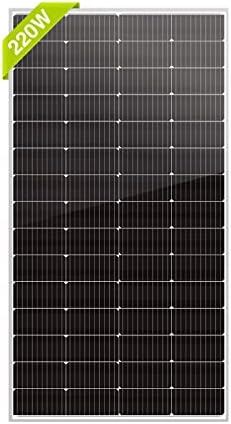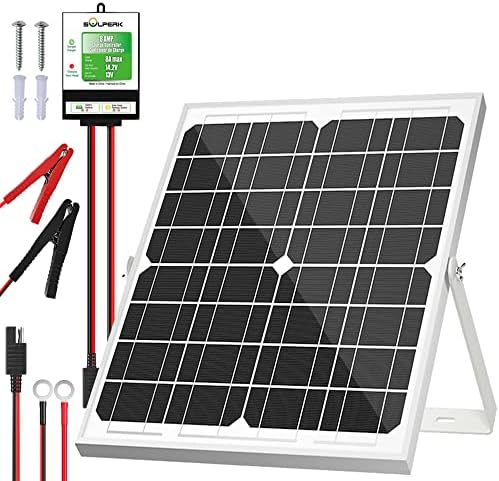# The Eco-Warrior’s Guide to Solar Power: Sustainable Choices That Matter
Picture this: the sun is shining bright, casting golden rays onto a tranquil landscape dotted with vibrant wildflowers. There I was, sipping freshly brewed herbal tea on my porch, marveling at the simplicity of life powered entirely by the sun. Every beam harnessed and transformed into energy created a rhythm of peace and gratitude. It’s a beautiful vision and, thankfully, one that can be a reality for anyone willing to embrace solar power. In this guide, we’ll explore the ins and outs of harnessing solar energy—what it means for sustainability, the choices that truly matter, and insights that can empower every eco-warrior ready to make a change.
## Why Solar Power?
The modern world faces significant environmental challenges, from carbon emissions to resource depletion. Transitioning to solar power is one of the most effective ways to reduce individual carbon footprints and promote sustainable living. Solar energy is clean, renewable, and abundant. Unlike fossil fuels, which are finite and harmful to our ecosystems, solar power harnesses the sun’s energy, resulting in a sustainable and eco-friendly solution.
### The Basics of Solar Power
Solar power operates by converting sunlight into electricity through photovoltaic (PV) cells. These cells are often arranged into panels, which can be installed on rooftops, in solar farms, or even as portable solutions. The process starts with sunlight hitting the solar panels, exciting electrons within the panels, and creating an electric current. This current can then be used to power homes, businesses, or even charge electric vehicles.
## Choosing the Right Solar Solution
### 1. **Assess Your Energy Needs**
Before diving into solar options, evaluate your energy consumption. Take a month’s worth of utility bills and determine your average energy use. This information will help you choose the right system size to meet your needs without overinvesting.
### 2. **Types of Solar Systems**
– **Grid-Tied Systems**: These are the most popular and connect to the local utility grid, allowing you to draw power when needed and sell surplus energy back to the grid.
– **Off-Grid Systems**: Ideal for remote locations, off-grid systems operate independently of the utility grid, which means you need to have battery storage to store excess energy for nighttime use.
– **Hybrid Systems**: Combining the benefits of both grid-tied and off-grid systems, hybrids offer flexibility, allowing energy to be drawn from both the grid and stored batteries.
### 3. **Consider Your Roof**
The condition and orientation of your roof play a significant role in solar panel efficiency. Ideally, a south-facing roof provides optimal exposure to sunlight. If your roof isn’t suitable, consider ground-mounted systems or solar canopies.
## Making Sustainable Choices
### 1. **Choose High-Efficiency Panels**
Not all solar panels are created equal. Options vary in efficiency and cost, so look for panels with high efficiency ratings (above 18%). Long-lasting options come with warranties that last 25 years or more, providing peace of mind and better investment returns.
### 2. **Explore Local Incentives**
Many regions offer incentives for solar power installation, such as tax credits, rebates, and grants. These can significantly reduce upfront costs, making solar more accessible. Research local programs and take advantage of available financial assistance.
### 3. **Think Beyond Panels**
Solar power is not just about panels; consider incorporating other technologies into your energy system:
– **Solar Water Heaters**: These systems harness solar energy to heat water, significantly reducing utility bills related to hot water use.
– **Solar Battery Storage**: Pairing your system with battery storage allows you to store excess energy and utilize it during peak demand or at night. This ensures you make the most of your solar investment.
– **Smart Home Integration**: Implementing smart devices can help you manage energy use more efficiently. Smart thermostats, lighting, and appliances can all work in synergy with your solar system to optimize energy consumption.
## Eco-Warrior Pro Tips
1. **Monitor Your Usage**: Install a solar monitoring system to track how much solar power you generate and use. This tool helps identify consumption habits and areas for energy savings.
2. **Stay Clean**: Regularly clean your solar panels to ensure they remain efficient. Dust, leaves, and snow can block sunlight. A simple wash a few times a year will keep them sparkling and functioning at their best.
3. **Be Mindful of Energy Use**: Adopt energy-efficient habits in your daily life. Switch to LED lighting, unplug devices when not in use, and consider energy-efficient appliances to lower your baseline consumption.
4. **Engage with Your Community**: Join or establish a local solar cooperative. Pooling resources can lead to better pricing, shared knowledge, and mutual encouragement between eco-warriors in your community.
5. **Stay Educated**: Keep up with the latest trends and technologies in solar power. The industry is continuously evolving, and new advancements could enhance your setup or save you money.
## Overcoming Common Hurdles
While adopting solar power is a fantastic step toward sustainability, it’s not without its challenges. Here are common issues you might encounter and how to tackle them:
### Initial Costs
Though the upfront cost of solar can be intimidating, financing options, including loans, leasing, and power purchase agreements (PPAs), can alleviate immediate financial strain. Take time to research, and focus on long-term savings over initial investments.
### Space Limitations
If you live in an area with limited roof space, consider alternatives like community solar programs. Many utility companies offer shared solar arrangements, allowing you to benefit from solar energy without installing panels on your property.
### Local Regulations
Before installation, familiarize yourself with local regulations regarding solar energy. Some homeowners associations (HOAs) may have restrictions on solar panel placement, while local governments often have permitting processes. Navigating these early can save you stress down the road.
## The Bigger Picture: Living Sustainably
Transitioning to solar power is just one piece of the sustainability puzzle. To be a true eco-warrior, consider how your lifestyle choices impact the planet. Here are some additional steps to bolster your sustainable living journey:
### 1. **Grow Your Own Food**
Home gardening reduces reliance on commercially grown produce, often shipped from far away, requiring additional resources. Whether you have a small balcony or a large yard, growing herbs, vegetables, and fruits contributes to a sustainable lifestyle.
### 2. **Reduce Waste**
Implement a zero-waste mindset by composting, recycling, and minimizing single-use products. Explore local bulk stores to reduce packaging waste and embrace reusable alternatives.
### 3. **Choose Eco-Friendly Transportation**
Opt for walking, biking, or public transportation whenever possible. Consider electric vehicles (EVs) for longer journeys. Aligning your transportation choices with your dedication to sustainability enhances your overall impact on the environment.
### 4. **Support Sustainable Brands**
Prioritize purchasing from businesses committed to environmentally responsible practices. Research brands that focus on ethical sourcing, fair labor practices, and eco-friendly materials.
## Conclusion
Solar power is more than just a trend; it’s a vital step toward a sustainable future. Embracing solar energy empowers you to reduce your carbon footprint, promote environmental stewardship, and live a life that’s not only eco-friendly but also fulfilling. With careful planning and informed choices, anyone can harness the power of the sun and contribute to a healthier planet. Let your eco-warrior spirit shine bright, transforming the world one solar panel at a time!



